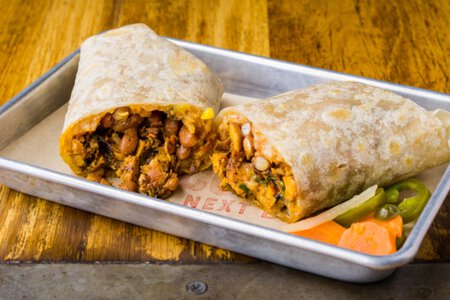QConPlus 2021: Takeout burritos and minimizing design-time coupling in a microservice architecture
application architecture microservice architecture loose coupling design-time couplingContact me for information about consulting and training at your company.
The MEAP for Microservices Patterns 2nd edition is now available
I gave this presentation at QConplus 2021. It illustrates how to design loosely coupled services using the problem of ordering burritos.
Here’s a burrito from one of my favorite restaurants:

Abstract
Delivering large, complex software rapidly, frequently and reliably requires a loosely coupled organization. DevOps teams should rarely need to communicate and coordinate in order to get work done. Conway’s law states that an organization and the architecture that it develops mirror one another. Hence, a loosely coupled organization requires a loosely coupled architecture.
In this presentation, you will learn about design-time coupling in a microservice architecture and why it’s essential to minimize it. I describe how to design service APIs to reduce coupling. You will learn how to minimize design-time coupling by applying a version of the DRY principle. I describe how key microservices patterns potentially result in tight design time coupling and how to avoid it.
Slides
Interview
Here is an interview where I discussed this presentation.
Video
You can find the video and transcript on the InfoQ website.
I provide consulting and training to help you use the microservice architecture effectively.


 Premium content now available for paid subscribers at
Premium content now available for paid subscribers at 




